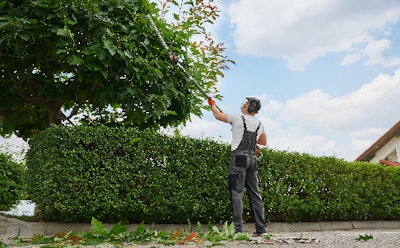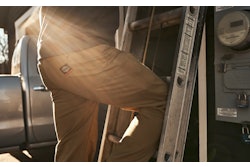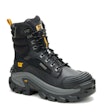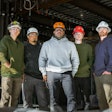
When questioning whether to wear gardening overalls for construction work given that they can be relatively inexpensive, the question really is not if they should be worn but should they be worn? That determination comes down to a particular job’s safety and functional requirements and the need for adequate protection appropriate to the job task on a construction site.
In contrast to workwear such as pants and shirts, overalls provide seamless chest-to-toe protection, be it for construction work or gardening tasks such as landscaping. Overalls offer extra coverage and convenience.
Design and Features
Both gardening and construction overalls provide plenty of storage capacity with chest, hip, and back pockets, some of them deep and accommodating an option of transporting tools and work-related electronics, enabling an uninterrupted workflow. Both gardening and construction overalls often come in colors that hide stains, although they should be cleaned as one would regularly wash apparel.
Construction and gardening overalls may both be insulated for extra protection in the weather and provide that extra layer of comfort while enabling ease of movement.
Some overalls may be made of water-resistant materials, appropriate for working in wet and muddy weather conditions.
Another way in which the designs of the overalls may provide ease of movement and comfort is through adjustable straps fastened with buckles or buttons for easy adjustment as well as an elastic or adjustable waistband.
Side buttons and zippers in gardening overalls make for ease in putting them on and taking them off; such features are available in both gardening and construction overalls. Since gardening work – as well as construction work – entails exposure to all sorts of elements, rust-resistant buttons, zippers, and fasteners help extend the life of the apparel.
Some gardening overalls even feature removable bibs to convert them into regular pants when needed. Reinforced knees can be found on both gardening and construction overalls to provide added protection for tasks requiring prolonged kneeling.
Sizes and Durability
Gardening overalls may be available in full-length or short-length options for seasonal needs. They may be appropriate for construction work if safety considerations allow for it. As all overalls should be chosen to accommodate different body types, so much so for gardening (or construction) overalls to be worn by women working on a construction site who require safe, comfortable, and well-fitting apparel.
What differentiates overalls designed for construction work from gardening overalls is that construction overalls are designed and manufactured to shield workers from various hazards so they can conduct their job with a measure of safety and security.
Durability is key, as construction work entails potential hazards such as exposure to abrasive materials, perhaps the presence of hot asphalt, the need for high visibility, and job tasks requiring heavy lifting. Overalls designed for construction work also serve as protective garments against heat, thermal, and electrical effects, as well as chemical and hazardous materials.
Materials
Gardening overalls may be made of durable material such as denim, canvas, or heavy-duty cotton. As such, they may be appropriate for some construction work jobs. Ripstop fabrics are common to both overall types in providing durability.
Breathability also is important in construction apparel and garden overalls may offer that feature. The benefits of fabrics providing UV protection cannot be overstated. Reinforced stitching that prevents tears and rips can be found on gardening overalls and also enhance the safety features of overalls designed for construction work.
Historically, overalls were invented in the mid- to late 1890s at Levi Strauss & Co. to serve as protective clothing for physically demanding work. Workers embraced them for their durability, with Levi Strauss & Co.’s slogan for them from 1880 to 1890s being ‘Never Rip, Never Tear’.
They continued to evolve to include a bib, hookless fasteners, and belt loops to replace buttons for the over-the-shoulder straps.
Certainly, if safety issues are a concern, construction workers should stick with wearing overalls designed with extra safety measures and durability. If the construction job requires light tasks where having all of the features of gardening overalls such as extra pocket storage serves the purpose, gardening overalls may be a safe – and less expensive – choice.
As always, consult the jobsite’s safety manager for the final word on what is appropriate apparel for the jobsite and workers’ functions.















